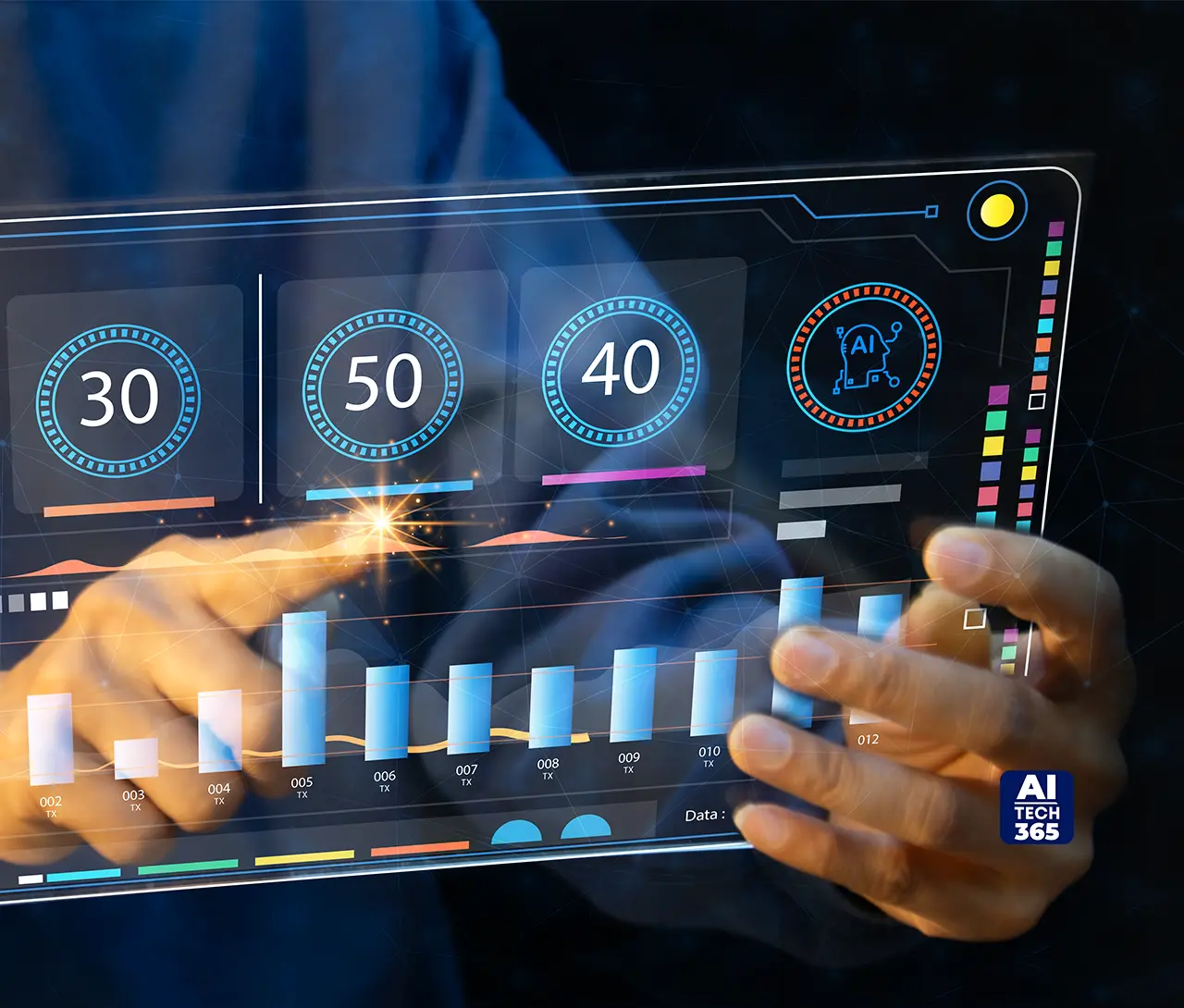Classic rule-based systems such as ‘if X, then Y’ used to be effective, but today’s customer journeys are way too intricate. Customers make interactions using different channels, at different times, and with different purposes. Sticking to the strict rules is no longer possible. An AI-Driven personalization engine is what you definitely need in such a situation.
The engine is essentially a loop that never stops. It takes in data from various touchpoints, creates models that can recognize the behavioral patterns, makes real-time decisions, and sends out recommendations instantly. The loop is always working, getting better with each action done, thus improving future predictions.
The migration to AI-driven personalization is no more a choice. It has become part of the modern customer experience and business development. Generative AI has transitioned from being a concept of the future to a present-day business tactic and it has been reshaping different sectors by making them more efficient and engaging. The companies that welcome this loop can not only predict the customers’ needs but can also provide significant experiences that lead to measurable results on a large scale.
Understanding the Core Components and Building the Data Foundation
If you want an AI-Driven personalization engine that actually works, you need to start by knowing its core parts. At the center are three pillars that hold everything together. First is the observability layer. This is where all real-time activity like clicks, views, purchases, and scrolling is recorded. If you skip this, the engine is basically guessing. It misses the small hints that tell you what a user really wants.
Then there is the feature store. You can think of it as a memory bank that holds model-ready features, from user history to aggregated behaviors. When the engine needs to make a recommendation, it pulls the right data immediately. Fast access is key. If the model waits for data, users lose interest.
The third piece is the decision layer. This is where the engine gets a request, usually through an API, and serves personalized content like a ranked list of products or articles. Services like Amazon Personalize facilitate the process considerably by allowing businesses to present real-time recommendation. Customers receive their preferences and companies’ engagement and conversions grow.
However, the most efficient configuration is useless if the data is not pristine. It is necessary to standardize data streams from Kafka or Kinesis or batch data from Snowflake or BigQuery. Identity resolution is just as important. Every touchpoint needs a single ID, building a unified customer profile. This keeps recommendations accurate and meaningful.
To sum up, the engine can only be as strong as its base. The hyper-personalized experiences are built on observability, a reliable feature store, a fast decision-making layer, and trusted and unified data. If implemented correctly, companies can convert raw data into interactions that are perceived as being natural and intuitive.
Also Read: GPT vs. BERT: Which AI Model Is Best for Your Enterprise?
The 4-Step Tactical Build (Workflow & Tools)
Step 1: Feature Engineering and Data Prep
Before a model can make smart recommendations, it needs good inputs. That starts with feature engineering. Here, raw event data from clicks, purchases, page views, or even time spent on a section gets transformed into features the model can understand. For example, you might calculate ‘time since last purchase’ to see how active a user is or a ‘category affinity score’ to understand what kind of products they prefer. These features are what let the engine make predictions that feel personal.
Using a Feature Definition Document helps a lot to keep things in order. It is in fact a kind of cheat sheet for each feature listing the data sources, the transformation steps, and what the model should do with it. Consider it as instructions for the model written in simple words.
The tools for this step are straightforward. Python, with Pandas or Spark, is perfect for transforming data. When it comes to storing and delivering features, solutions such as Tecton or Feast provide a fast way to access them whenever the model requires so. Once the features are cleaned and structured, the engine is all set to extract patterns through learning and to offer real-time personalization.
Step 2: Model Selection and Training
The moment is here to select the correct model once your attributes are all set. The selection is based on the required complexity level of your recommendations. To initially introduce, Collaborative Filtering provides a great solution. It analyzes user behaviors and presents results with phrases like ‘people with the same taste as you also bought this’ and thus it is easy to implement. A greater need for scaling can lead to choosing Matrix Factorization, which can work with bigger data streams and also expose the relationships between users and items that are not obvious. In highly sophisticated cases, deep learning models such as Recurrent Neural Networks or vector embedding are capable of deciphering sequences and recognizing very subtle patterns in behavior.
The correct model choice is only the beginning of the process. You will have to train these models using tools like TensorFlow, PyTorch, or Scikit-learn, while cloud platforms like Vertex AI or SageMaker will relieve you of their scaling and deployment difficulties. Services such as Azure AI Personalizer take it to the next level by having the system learn from user feedback in real time, thus providing recommendations that change instantly and keep users involved through highly relevant content.
Step 3: Deployment and Serving (Low-Latency Decisioning)
Once your model is trained, it needs a way to deliver results quickly. This is where deployment comes in. A model is not just a script sitting on a server. It has to run as an API endpoint so other systems can request predictions instantly.
There are two ways to serve recommendations. Offline scoring involves pre-calculating suggestions for a broad audience. This works well for general campaigns or newsletters. Online scoring is more dynamic. It produces suggestions in an instantaneous manner relying exclusively on the particular user’s actions, which is very important for making the experiences relevant and timely.
In order to facilitate this scenario, technologies such as Kubernetes and Docker take care of the deployment and scaling. The API Gateways make sure that the model reacts instantly and without any waiting time, and the monitoring instruments like Prometheus collect data on performance so that it becomes apparent when the system needs tweaks. Done right, deployment turns a trained model into a live engine that continuously powers personalized experiences.
Step 4: Building the Continuous Feedback Loop
A personalization engine is never truly finished. To keep it effective, you need a continuous feedback loop. Start by logging every recommendation the engine makes and what the user does in response. Did they click, purchase, or ignore it? This simple record is the foundation for learning.
Over time, user behavior changes, and models can start losing accuracy. This is called model drift. Watching for these shifts is essential so that recommendations stay relevant and engaging. It is important to look for these changes so that the suggestions will always be up-to-date and interesting. When the performance falls below a specific level, the model should be retrained. The process of doing so automatically helps the engine to remain accurate without the need for frequent human intervention.
HubSpot’s AI features reveal the working of this concept through examples. By automating the repetitive tasks in Marketing, Sales and Commerce, the teams can concentrate on the strategy while the engine is still learning from the actual users’ behavior, thus, making personalization better in a scalable way.
Operationalizing the Engine for Governance and Scaling
The creation of an AI-powered personalization engine is only the initial step. In order to reap the benefits, it is necessary to evaluate the success and ensure the system’s fairness and dependability. Metrics are very significant. It is vital not only to measure clicks but also to observe the business outcomes such as revenue per session, conversion rates, and customer lifetime value. The figures indicate if your personalization mechanism has been able to produce results or not.
Testing is equally important. Every new algorithm should be compared against a control group or a champion model. A/B testing helps you understand what works and what does not. Without it, you are guessing, and guessing is costly.
Governance and ethics are issues hard to neglect. Explainability, or XAI, can guarantee that the question is answered: why was this recommendation made by the engine? It is of imperative importance, not only for debugging purposes but also for regulatory compliance. On the other hand, bias mitigation makes personalization just and equitable. Checking and balancing the outputs for bias ensures that neither the new users nor the specific demographic groups are overshadowed.
The business case has been made unequivocal. According to Deloitte, 80% of the buyers prefer to associate themselves with the brands that provide tailored experiences. Besides, they are willing to pay about 50% more for such brands. Thus, it can be concluded that personalization done right is not only an application but also a source of engagement, loyalty, and revenue. Your engine can grow the right way by measuring the performance tightly, using ethical practices and optimization continually, and at the same time, winning the trust of your customers.
The Future of Hyper-Relevance
An AI-Driven personalization engine is not just a tech solution; it’s the way to connect data with the good customer experiences. When it is developed from start to finish, with meticulous feature engineering, smart model creation, real-time application, and feedback loops, it can provide hints that are nearly intuitive. Take the easiest route first with Collaborative Filtering and move on to the advanced deep learning models as you build up your confidence and grow. The benefits are obvious. Adobe was recognized as a Leader in the 2025 Gartner Magic Quadrant for Personalization Engines for its ability to execute and completeness of vision. The time has come for you to plan, test, and improve your personalization engine.


